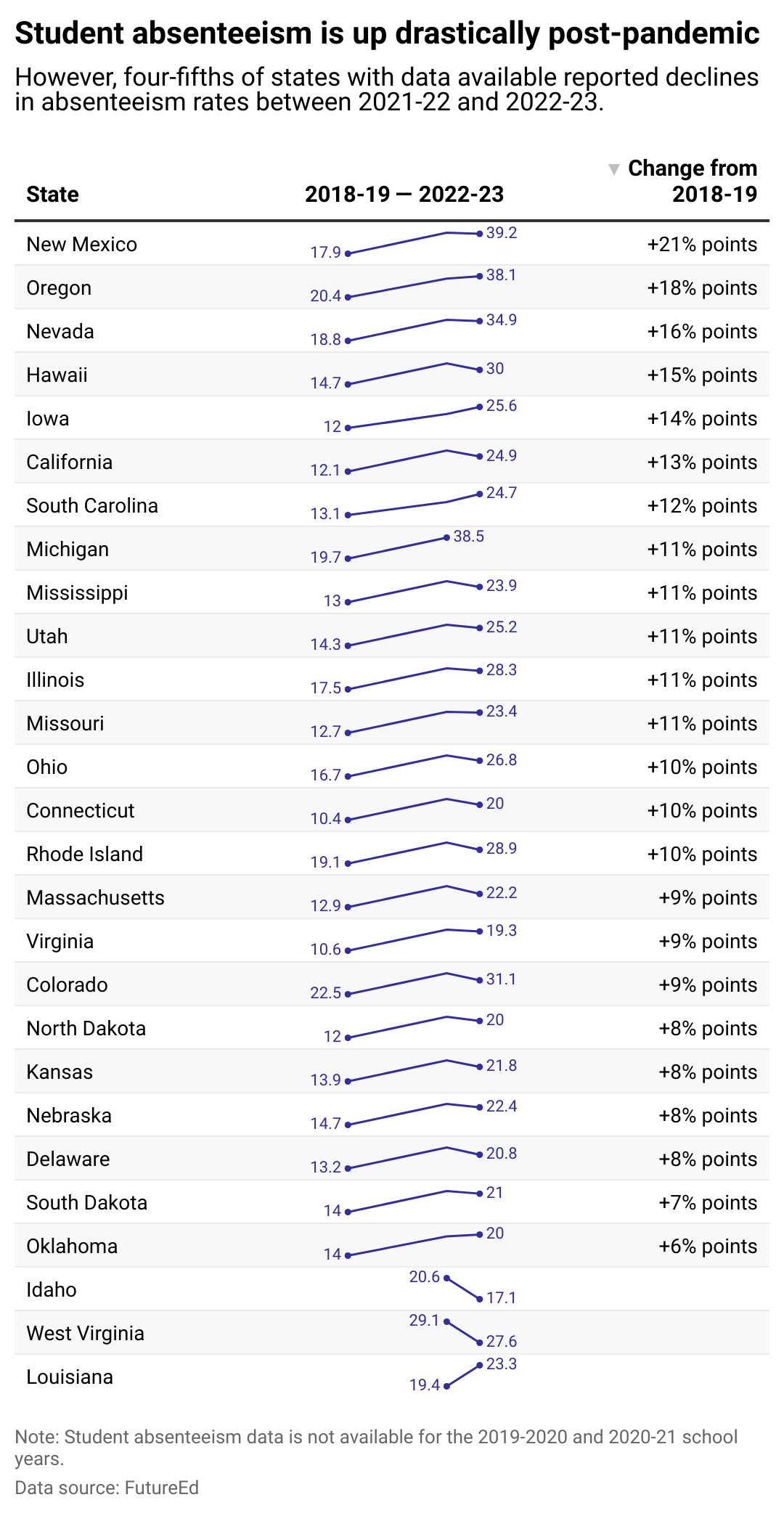Chronic absenteeism is still up in schools across the US

Canva
Chronic absenteeism is still up in schools across the US
Students looking at a teacher in front of them in a classroom.
American students are coming back to the classroom after the pandemic, but they still aren’t attending class at pre-COVID-19 rates.
HeyTutor, an in-person and online tutoring provider, looked at data published by FutureEd, a Georgetown University think tank, to gauge how student absenteeism has changed since the 2018-19 school year.
Not all states publish this data in accessible formats every year, but FutureEd’s study found that of the nine states where comprehensive data is available, all have reported that student absenteeism rates have fallen since 2021-22, but are still up significantly from 2018-19. The organization defines a chronically absent student as someone who misses 10% or more of the school year, regardless of the reason.
Chronic absenteeism may indicate a student is experiencing significant obstacles, such as mental health challenges or issues with transportation, the researchers wrote. Irregular student attendance doesn’t only harm said student: It can also make it difficult for teachers to stay on schedule with the curriculum, the effects of which can trickle down to the students who regularly attend class.
The problem of chronic absenteeism can present real consequences for students long into their adult lives. At the beginning of the 2021-22 school year, students’ achievement in math and reading was measurably lower than in the 2019-2020 school year, according to the Northwest Evaluation Association, a nonprofit testing organization. This difference equates to a $43,800 deficit of what one can expect to earn over a lifetime, according to The74, a nonprofit news website covering education.
![]()

HeyTutor
An improving situation, but not enough
A chart showing that student absenteeism is way up since the 2018-19 school year, but down from 2021-2022.
New Mexico has had the highest absenteeism increases since the COVID-19 pandemic began more than three years ago. According to New Mexico’s Legislative Education Study Committee’s paper on School Attendance and Chronic Absence, 60% of students experiencing housing insecurity students were chronically absent during the 2022-2023 school year. Other groups with high rates of chronic absenteeism were Native American students (48.28%), students with disabilities (44.19%), English-language learners (43.08%), and students from economically disadvantaged backgrounds (42.49%).
The report also found the students suffering the most from chronic absenteeism reflect the demographics of several groups who filed a lawsuit against the state for its poor education system. In 2018, a New Mexico judge ruled that the state failed to prepare all of its students for careers and college. The judge pointed to New Mexico’s low graduation rates, proficiency in math and reading, and the fact that 50% of its college students needed lower-level courses. The ruling called for more resources and funding for the students.
To fight chronic absenteeism nationally, the White House encourages school systems to use targeted interventions, such as periodic mailings home with absence records, text messages to guardians when students are absent, and school staff seeking out students who are frequently absent to find ways to help them attend more often.
Story editing by Jeff Inglis. Copy editing by Kristen Wegrzyn.
This story originally appeared on HeyTutor and was produced and
distributed in partnership with Stacker Studio.
